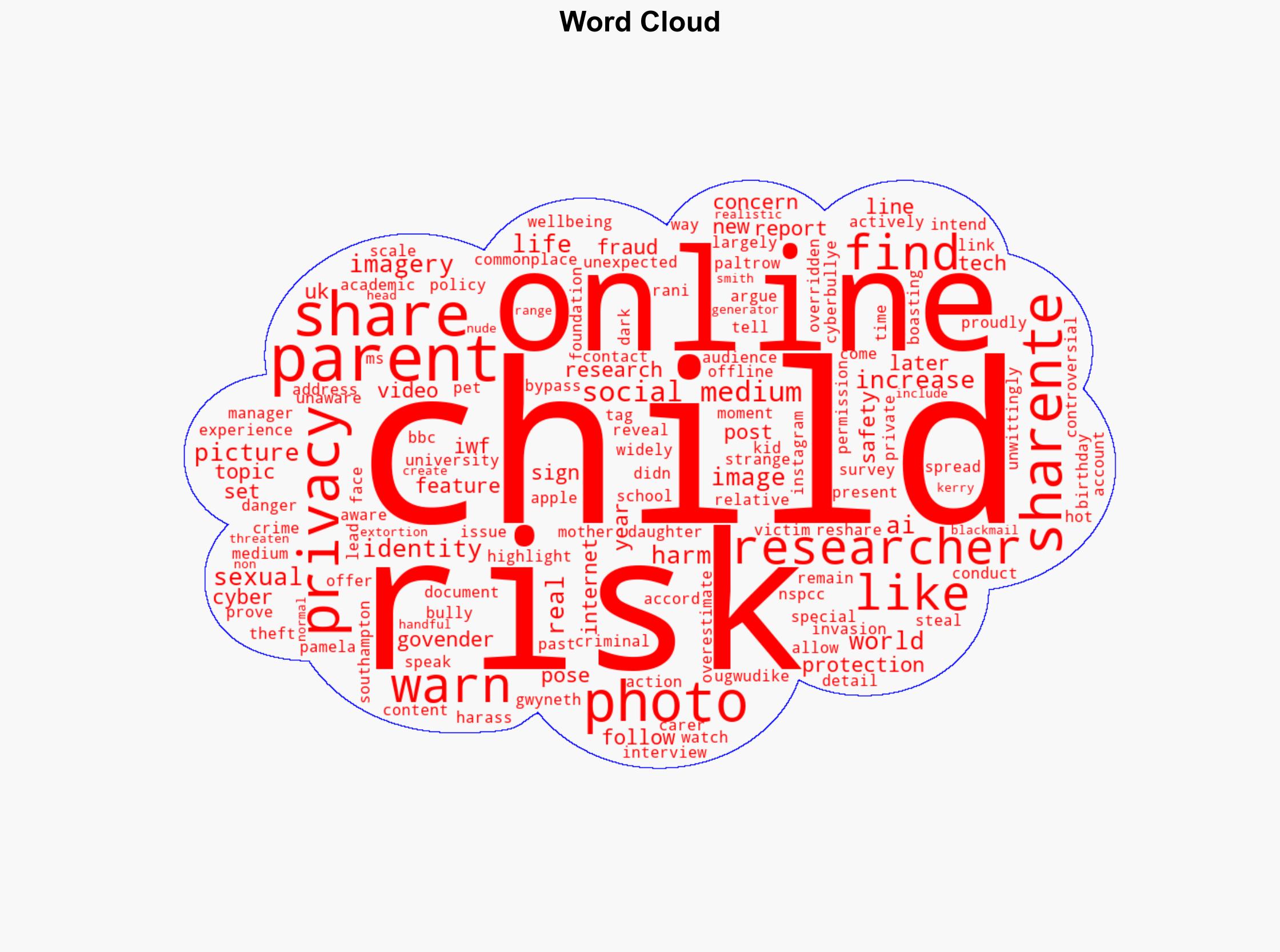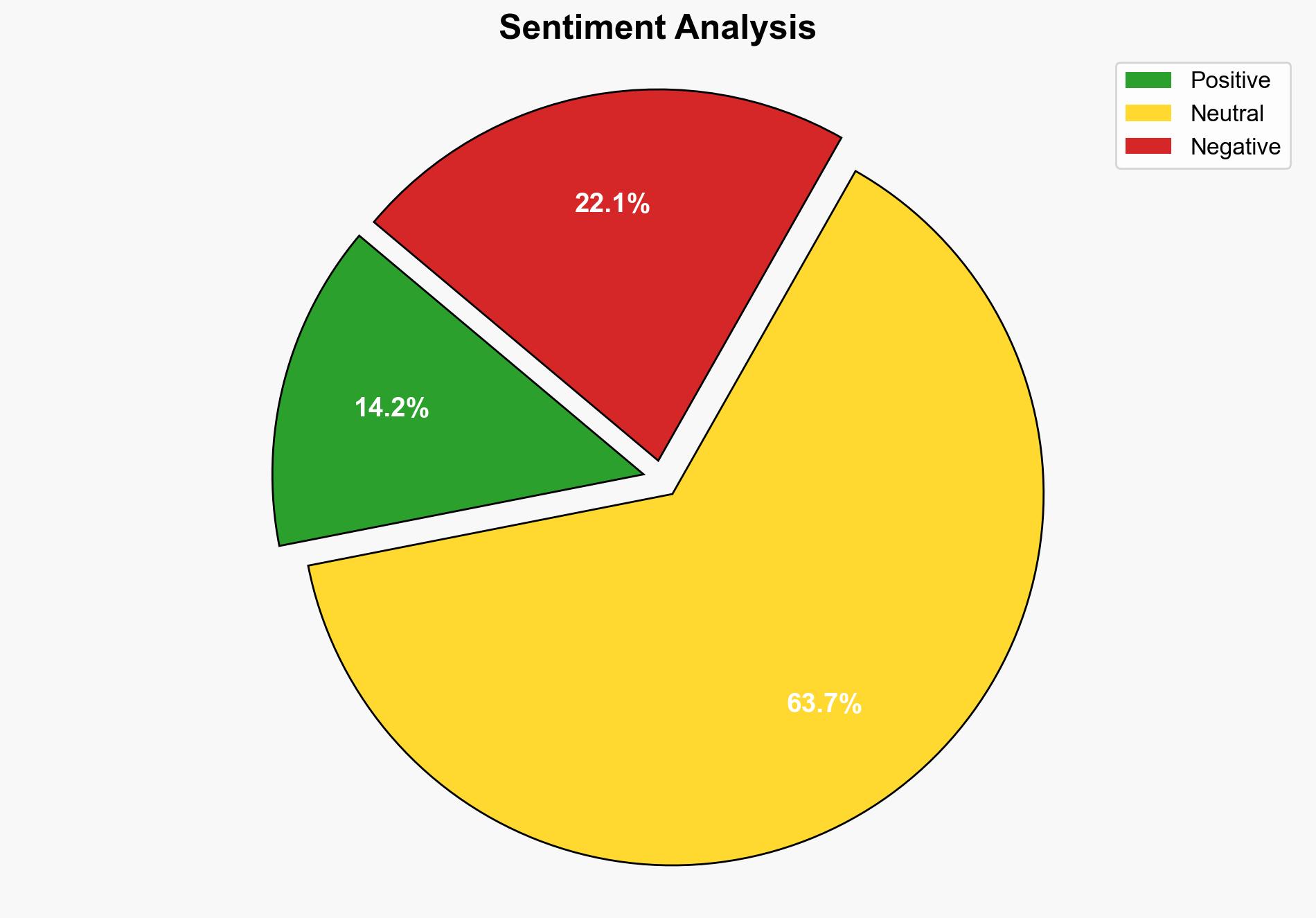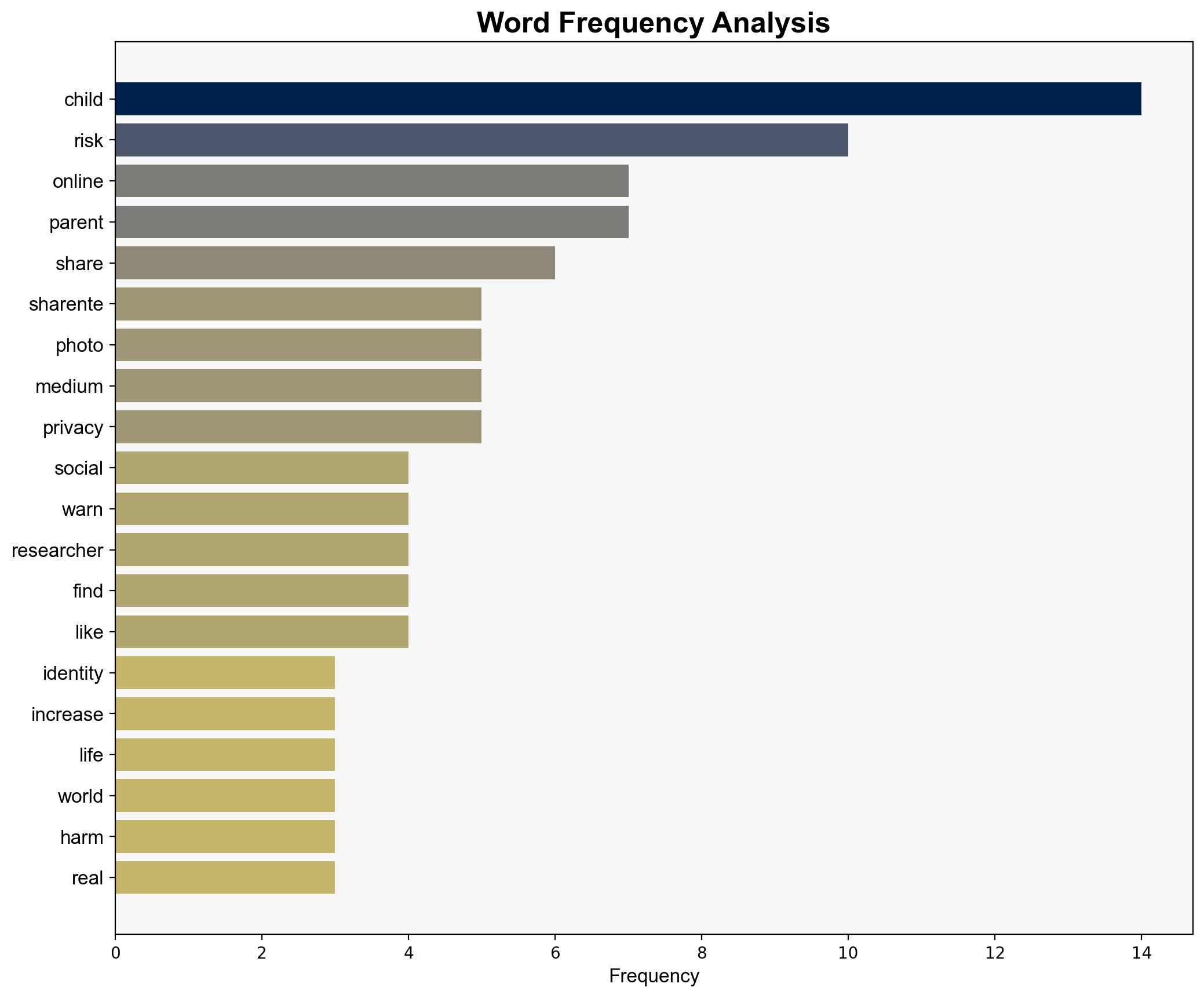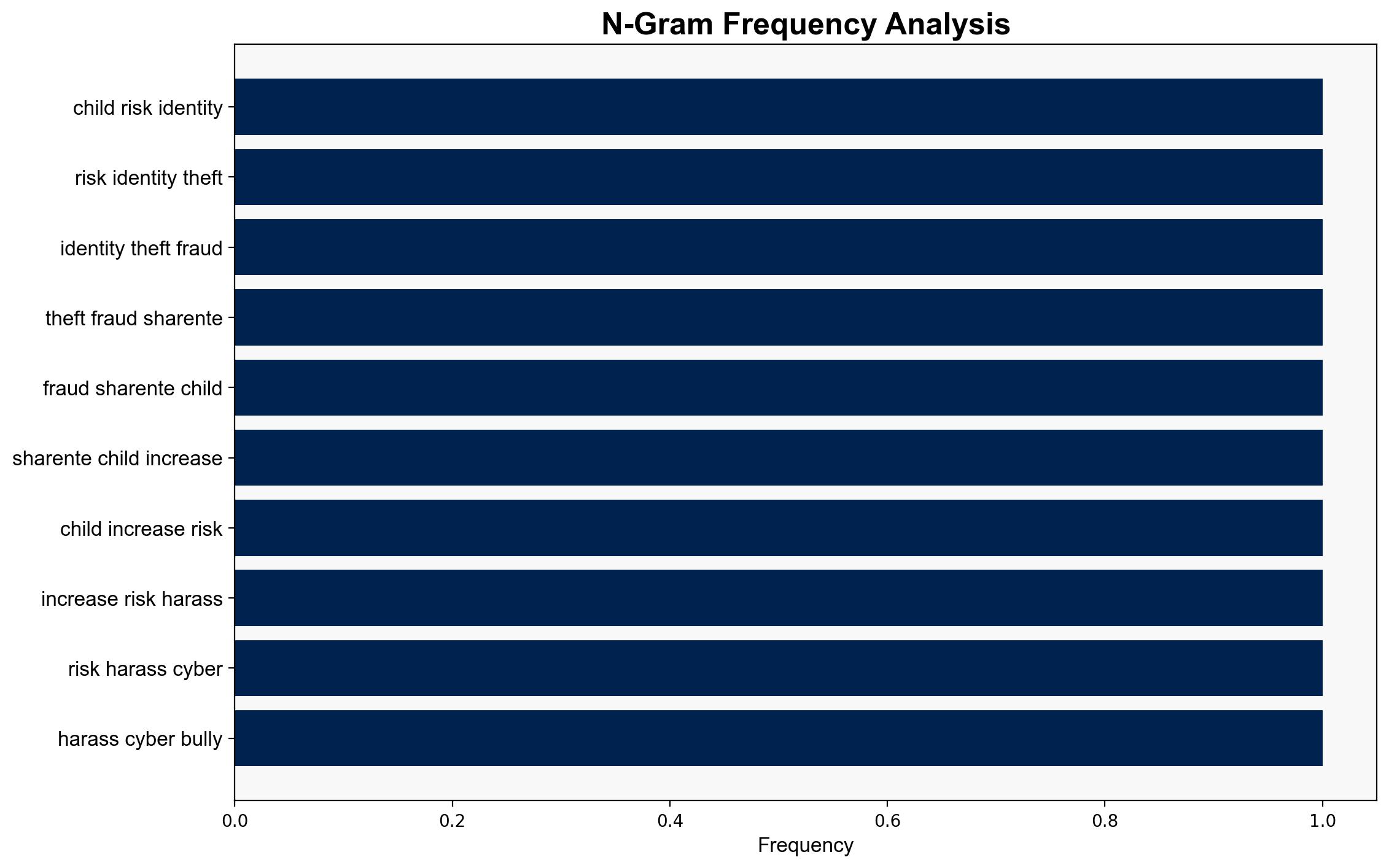Children at risk of identity theft and fraud from ‘sharenting’ – BBC News
Published on: 2025-09-01
Intelligence Report: Children at risk of identity theft and fraud from ‘sharenting’ – BBC News
1. BLUF (Bottom Line Up Front)
The strategic judgment indicates a high confidence level that ‘sharenting’ poses a significant risk to children’s privacy and security, potentially leading to identity theft and cyberbullying. The hypothesis that ‘sharenting’ increases the risk of cybercrime against children is better supported. Recommended actions include raising awareness among parents about privacy settings and potential risks, and advocating for enhanced privacy features on social media platforms.
2. Competing Hypotheses
1. **Hypothesis A**: ‘Sharenting’ significantly increases the risk of identity theft and cyberbullying for children. This hypothesis is supported by research findings from the University of Southampton and warnings from child safety experts.
2. **Hypothesis B**: The risks associated with ‘sharenting’ are overstated, and existing privacy settings on social media platforms provide adequate protection. This hypothesis relies on the assumption that parents are aware and utilize privacy features effectively.
3. Key Assumptions and Red Flags
– **Assumptions**: Hypothesis A assumes that parents are generally unaware of the full implications of sharing children’s data online. Hypothesis B assumes that social media privacy settings are robust and that parents use them correctly.
– **Red Flags**: The reliance on self-reported data from parents may introduce bias. The effectiveness of privacy settings is questionable, as researchers highlight that features like tagging and resharing can bypass protections.
– **Blind Spots**: The potential for AI-generated imagery to exacerbate risks is not fully explored in Hypothesis B.
4. Implications and Strategic Risks
The widespread sharing of children’s images and personal information can lead to increased cybercrime, including identity theft and cyberbullying. The potential misuse of AI to create realistic but harmful imagery poses a new threat. These risks could escalate if social media platforms do not enhance privacy measures. The psychological impact on children and families, as well as potential legal implications, are significant.
5. Recommendations and Outlook
- **Mitigation Actions**: Educate parents on the risks of ‘sharenting’ and how to use privacy settings effectively. Encourage social media platforms to improve privacy features and provide clearer guidance to users.
- **Scenario Projections**:
– **Best Case**: Increased awareness and improved privacy measures reduce the risks associated with ‘sharenting’.
– **Worst Case**: Continued negligence leads to a rise in cybercrime targeting children, with severe psychological and legal consequences.
– **Most Likely**: Gradual improvement in awareness and platform features, but persistent risks due to evolving cyber threats.
6. Key Individuals and Entities
– Pamela Ugwudike (Lead Researcher)
– Rani Govender (NSPCC Child Safety Online Policy Manager)
– Kerry Smith (IWF Head)
7. Thematic Tags
national security threats, cybersecurity, child safety, privacy, social media risks





